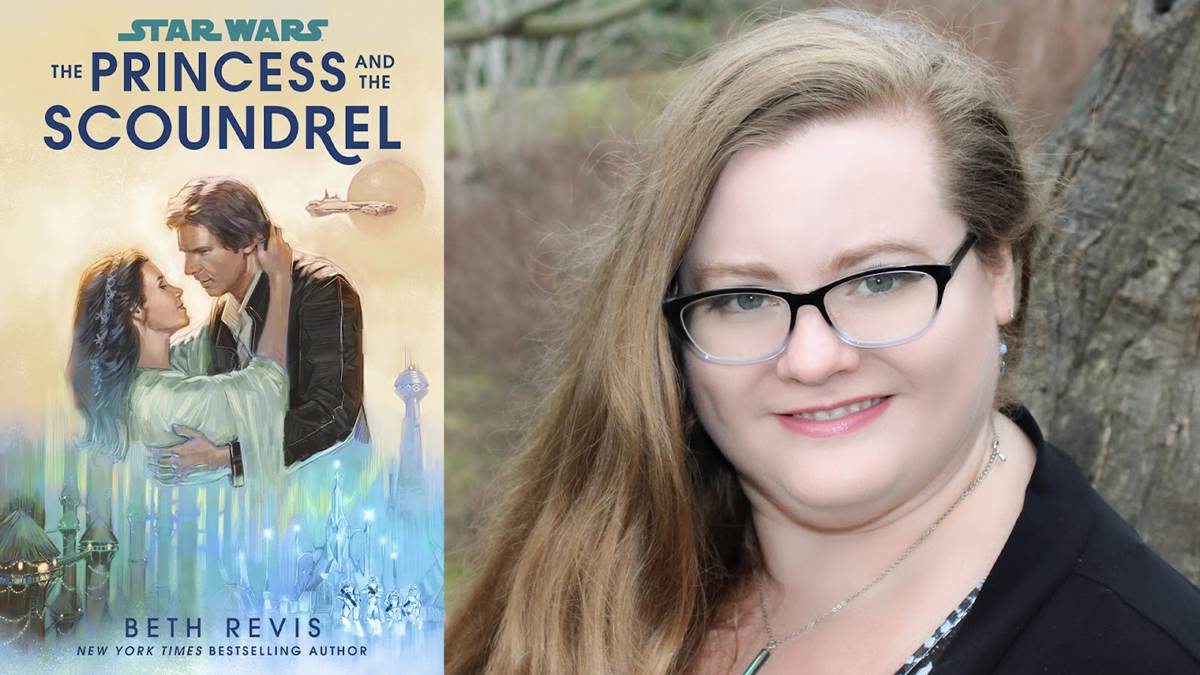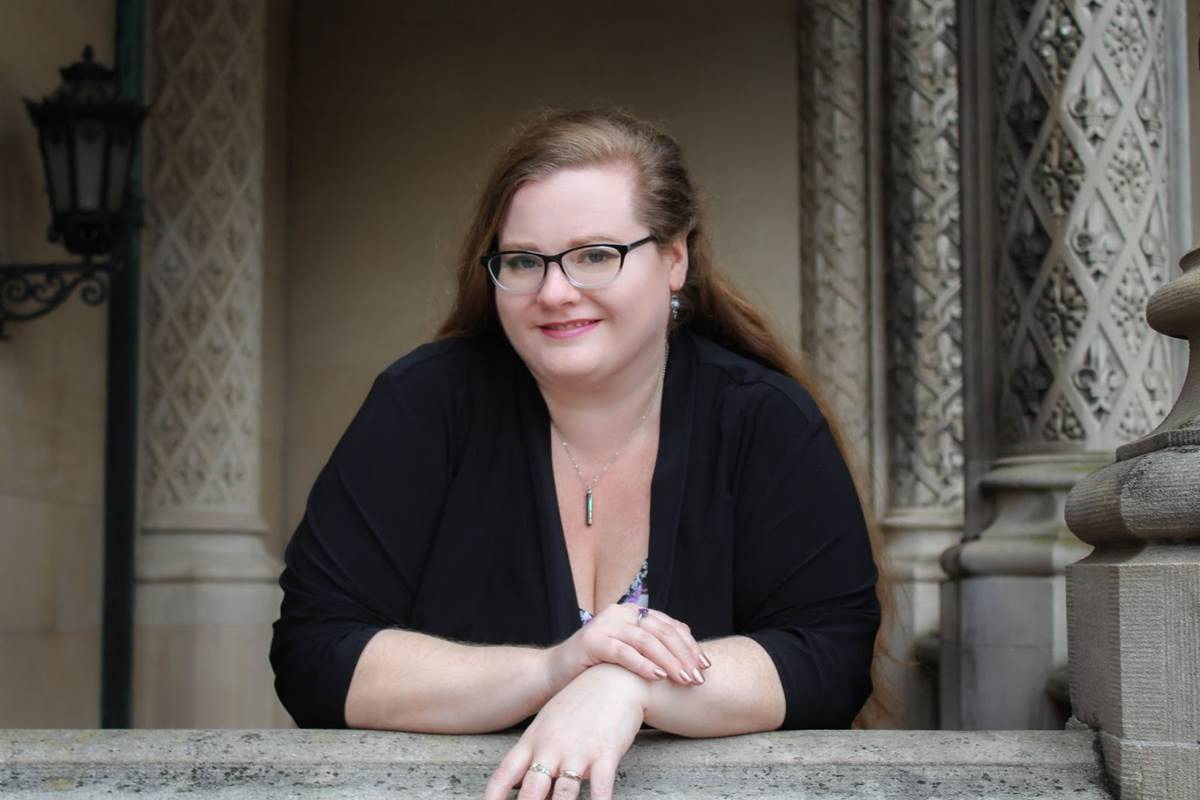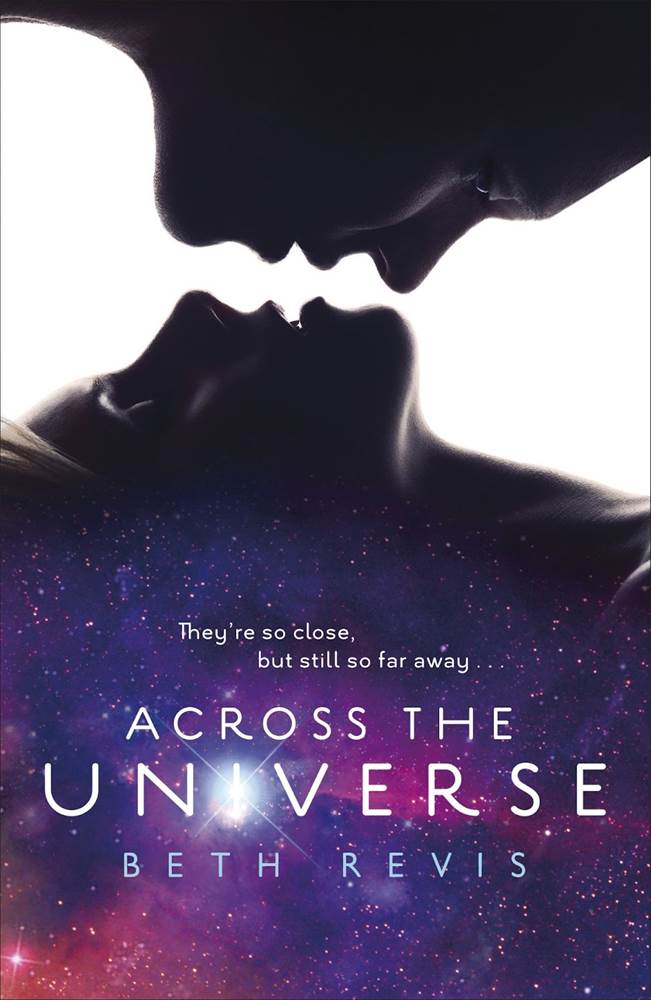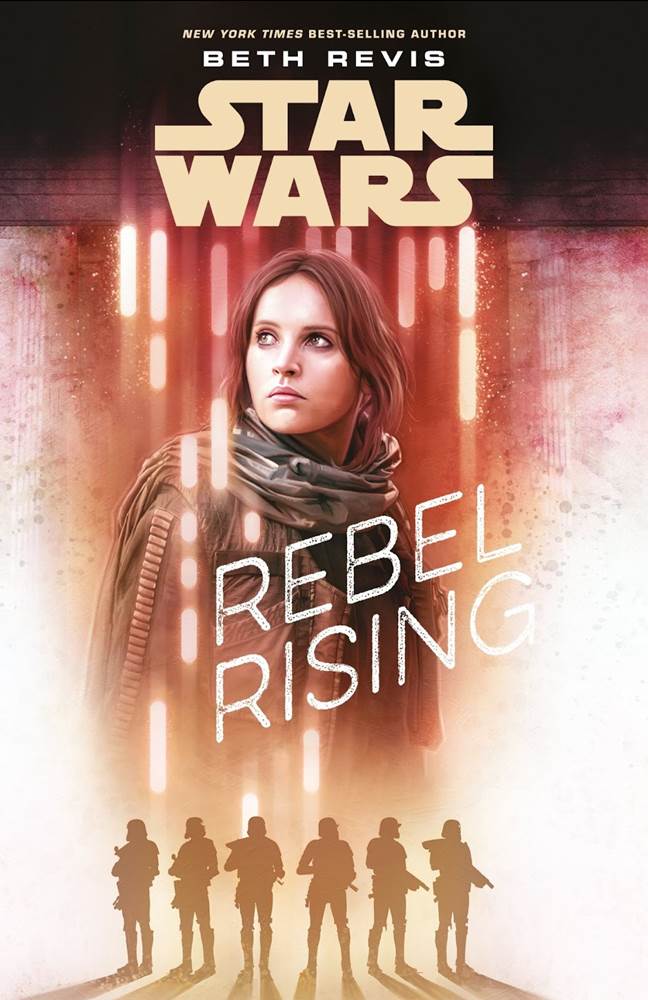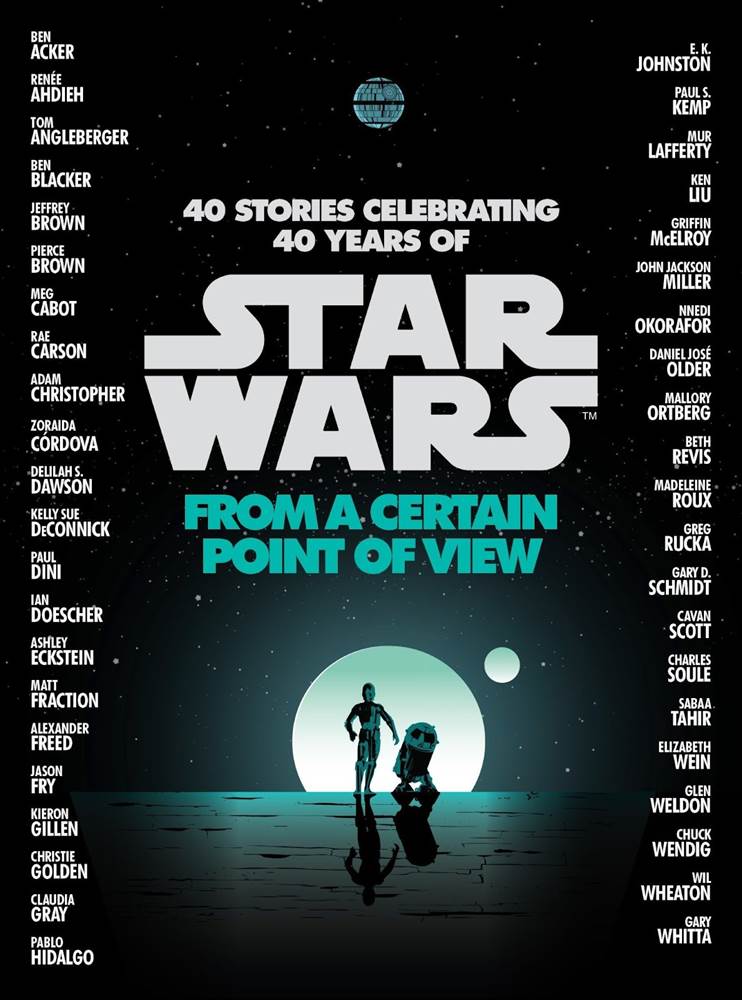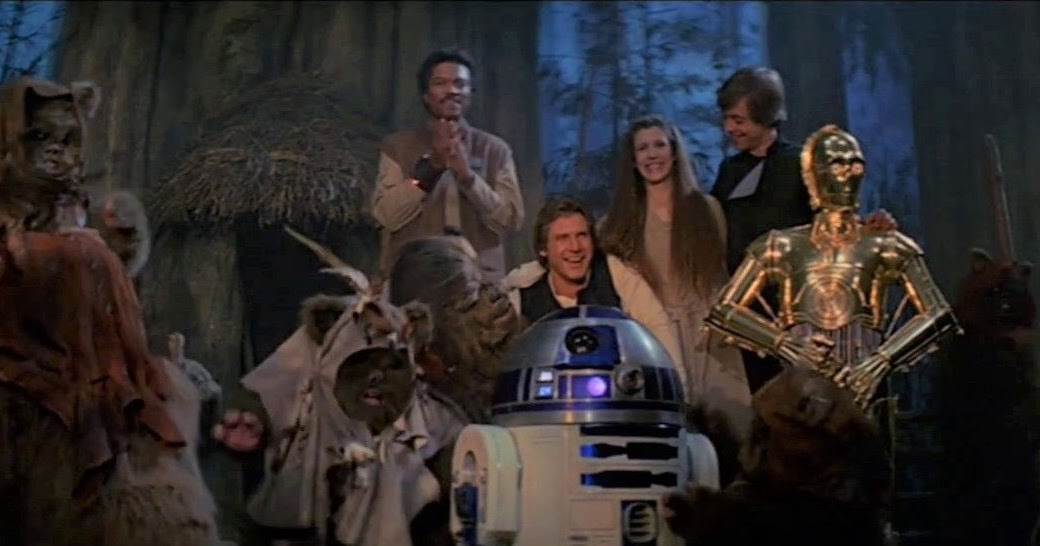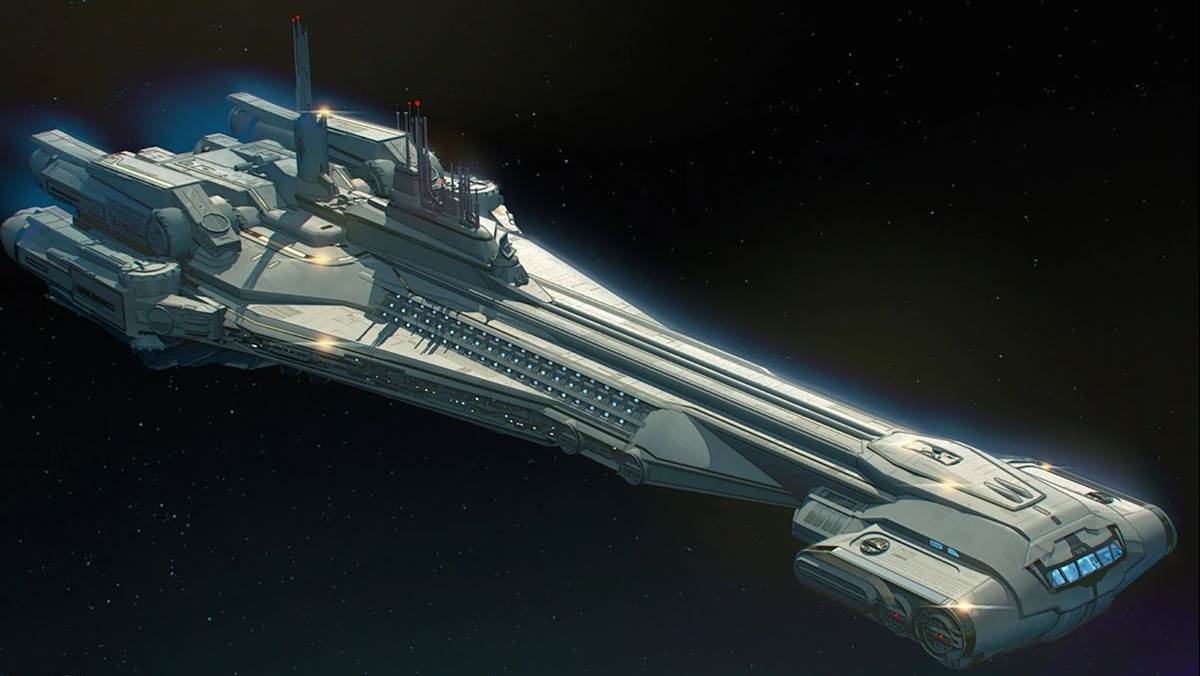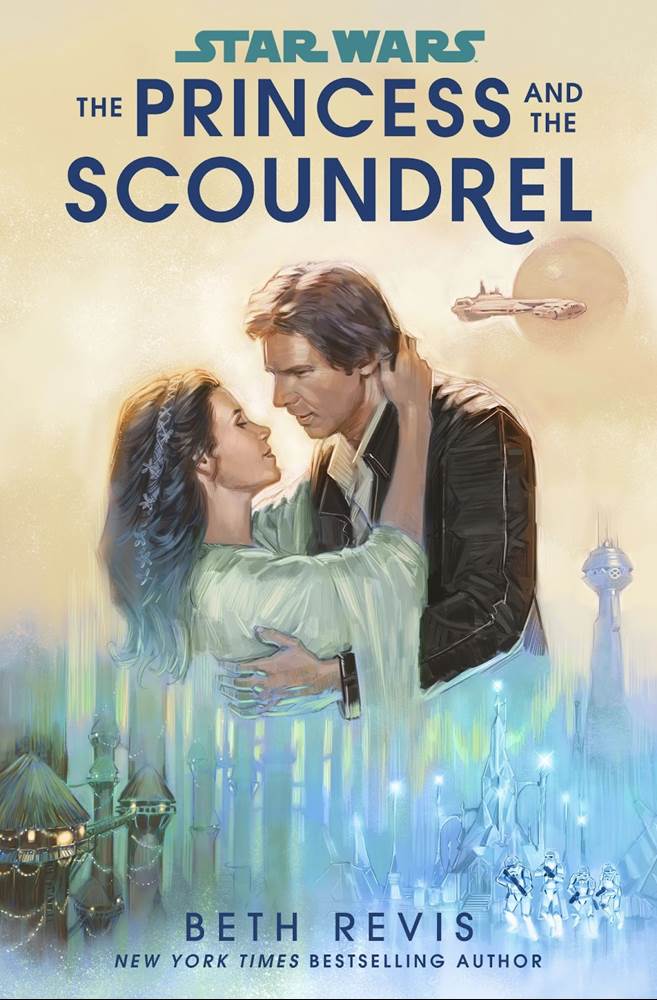Starting in 2011, acclaimed author Beth Revis made a name for herself in the literary world with the best-selling Across the Universe trilogy of young-adult science-fiction novels. She followed that up with the Paper Hearts writing-advice series and then visited A Galaxy Far, Far Away in 2017 with her novel Star Wars: Rebel Rising.
She also contributed two short stories to the From a Certain Point of View anthology collections and has now contributed Han Solo and Princess Leia’s eventful wedding and honeymoon to the current canon in Star Wars: The Princess and the Scoundrel, out later this month from Del Rey. This week I had the fortunate opportunity to speak with Beth Revis about her writing career and what it was like penning a journey aboard the Halcyon starcruiser with the most famous couple in the galaxy.
Mike Celestino, Laughing Place: What was your relationship with Star Wars growing up?
Beth Revis: I was very much a fan. I definitely grew up on these movies. They came out on television when I was a kid, and my mom taped them on VHS. I just remember watching them over and over with my brother. We literally wore those tapes out. They no longer function [laughs]– even if we had a VCR they wouldn’t function, because we wore them out. I still remember all the parts where the commercials would interrupt the Battle of Endor and things like that. It really was very much a part of my childhood, and it helped that I had a brother named Luke. We painted PVC pipes red and blue and green and would beat each other in the forest and pretend we were having lightsaber battles. It was definitely just a huge chunk of my childhood.
LP: And clearly it carried through to your adulthood. Was there ever a gap where you weren’t as into Star Wars?
Revis: It’s definitely been constant. I was in high school when the prequel movies came out, and during high school we were allowed to go off-campus for lunch because we lived in a very rural area. And I really remember hiking it to Taco Bell every day to get all the toys– [they] offered all the really cool prequel [collectibles]. I still have Padmé’s ship, I think. But yeah, I was definitely a nerd throughout.
LP: How did you first get started as a professional writer?
Revis: I always wanted to be a writer, but it took me a long time to realize that was a possibility to me. It felt like writing was this impossible job that you had to be born gifted for, and I just never thought it was something I could do until I was in college. I just started writing a short story and kept going, and it turned into a whole book. But it took me a long time to get published– I wrote ten novels over the course of ten years, all of which were rejected. None of them have ever been published or ever will be published, but fortunately for me the eleventh book was Across the Universe, which became my debut. It was my first science-fiction book that I had written, because I had not really realized that science fiction was a viable option for me. I thought all sci-fi was hard sci-fi, and it actually took my boyfriend at the time (who later became my husband) reminding me that I liked Star Wars, and that I liked a lot of science fiction that came out on television like Star Trek and Firefly. Then I realized I can write science fiction that wasn’t hard sci-fi, and [was] more of a space-opera type. That was the huge changing and turning point in my career.
LP: Was Across the Universe what got you noticed by Lucasfilm Publishing and invited to write for Star Wars?
Revis: I don’t know how they found me, but I am so grateful they did. They approached my agent for Rebel Rising, and at the time all I knew was that I was writing the Jyn Erso character. I didn’t know anything about the story [of Rogue One] itself. I was able to fly to [Lucasfilm headquarters in] San Francisco and read the script early, and then I discovered that I was going to be writing the story of Jyn’s background. That was just [amazing]– I was a kid in a candy [store]. I was like, ‘There’s so much I can do with this!’ It was so fantastic.
LP: Once you were on board with Rebel Rising, what was your approach to that project? How did you bring your own voice to Jyn Erso?
Revis: The really cool thing about Jyn is that we know her story, but we don’t necessarily know her character. Even in the movie, she’s very closed-off. She’s had a lot of trauma and she’s not very open with herself, with the other characters, [or] with the audience. So writing her story was really about peeling back the layers of her character and discovering who she is as a person and how she became that way. It was almost like a backwards mystery where I had to go trace my way through her past to discover what made her become the type of person that she is throughout the entirety of Rogue One. It was really a discovery story for me.
LP: What are your thoughts on the upcoming Star Wars: Andor live-action series? Are you excited for that?
Revis: I am so thrilled to watch that series. I was definitely at a level ten– I was super excited for it. I love Cassian, I love Mon Mothma, I wanted to see it all. And then the trailer came out with Forest Whitaker as Saw [Gerrera] and my entire brain exploded with joy. I cannot wait to see what he brings to this story.
LP: You also got to contribute two short stories to the From a Certain Point of View anthology collections. Why did you choose the characters you did and how did you approach writing those stories?
Revis: In the first one [tying in with the original Star Wars film], the story is ‘Fully Operational,’ and I wrote [it] from Tagge’s point of view. It takes place in the boardroom on the Death Star, when Vader walks in. That’s the first time the audience really sees Vader’s power and how he uses the Force to choke someone else. For me, it was all about that empty chair that was in that room. I really loved the idea of playing with that, and tapping in some of what we knew now from Rogue One, but that we didn’t know when A New Hope came out. So that was a really fun experience– to really just seed in some of those extra details from Rogue One that lead into A New Hope. But I also had a great time writing the other short story [for The Empire Strikes Back], ‘For the Last Time,’ because it’s Piett’s story, and it’s when we as an audience member first see Darth Vader without his mask. And then obviously it’s Piett’s first time seeing Darth Vader without his mask. That combination of vulnerability but also raw power behind his scars was such a fun thing to explore, but my real overall goal with both of those stories is to show that the villains are more nuanced. They’re not necessarily a man in a dark cape just being evil for evil’s sake. There’s evil in apathy, and there’s evil in bureaucracy, and there’s evil in all these little lawful ways that they do it. That’s really what I wanted to dig into with those stories.
LP: I know you can’t tell me whether or not you’ve been invited back to write a story for From a Certain Point of View: Return of the Jedi, but if you were to be, which character would you choose?
Revis: If I could, I would love to write about Mon Mothma, and perhaps lead into some things with The Princess and the Scoundrel, because that book takes place immediately after Return of the Jedi. So if I could maybe have a few little scenes that happen from that book but from Mon’s point of view, that would be really fun.
LP: What was the process behind Star Wars: The Princess and the Scoundrel for you as a writer?
Revis: It’s really interesting when I compare The Princess and the Scoundrel and Rebel Rising. Rebel Rising was really a story where I knew what happens– we all know the story of Star Wars and the Death Star and everything– I knew the plot, but I didn’t know the character. And it was the exact opposite experience with The Princess and the Scoundrel. I know these characters. I know Han, I know Leia, but this was a story where I got to make up a plot with characters that I knew very deeply. So it was a totally flipped experience from Rebel Rising, but also just so much fun to try to bring in a new adventure for these characters that I know and love so much, and also really dive into their internal thought processes. Because in a movie we can see them acting and we can see them having the adventure, but we don’t always know what they’re thinking, so most of my research with The Princess and the Scoundrel was watching the movies over and over and over again, which was honestly the best research I could ever do. I love my job [laughs]. But [I was] watching those movies and then trying to figure out what they’re thinking behind the words that they’re saying and the actions that they’re doing, and then drawing that forward into the story.
LP: In rewatching the Star Wars films, what ended up being your favorite scene between Han and Leia?
Revis: It’s a hard question, because there really are so many favorite scenes, and my favorite changes constantly. But I really love the scene on Bespin [in The Empire Strikes Back] when Leia is freaking out. She can tell something’s wrong with Lando, she knows that this situation isn’t right, and she’s frustrated at Han because he’s kind of blowing her off– or it seems that way. And then he gives her that very sweet kiss on the forehead and you see that he really understands her and is taking into account everything she’s saying. He’s just dealing with it in his own way. To me, that is the moment when their relationship shifted from flirty to more serious and more emotional-based. So [my answer is] that sweet kiss on Bespin, but there are so many good moments.
LP: In addition to Han and Leia, you also got to write some other familiar characters like Luke Skywalker and Lando Calrissian. How did you make sure you found the right voices for pre-existing characters?
Revis: With Han and Leia I have a little bit of a cheat code, because my husband’s also a huge Star Wars fan. So whenever I was writing their [dialogue], especially their banter and their back-and-forth, I would actually read those lines out loud and pretend to be Leia and have him be Han [laughs]. It worked really well! There were a couple times when he would say [a line] and I was like, ‘No! That’s not right.’ And I could change it and mold our voices. So Han and Leia’s bantering was the most fun to write, because I wrote it with my husband as a sounding board. The other characters– some of them were easier than others. I actually found Luke’s voice to be the hardest to write because I had a brother named Luke. I know that Luke and Leia, they’re newly realized that they’re siblings, so they don’t have the kind of hatred like, ‘Oh my god, brother!’ attitude. It was hard for me not to insert my own Luke into the attitude of Luke Skywalker, so that one I had to keep restraining myself on and remind myself, ‘No, this is not my brother Luke. It’s the other Luke.’ [laughs] And then Lando was so much fun to write, too, because I just imagined that he is always incredibly frustrated that [in] the duo of Han and Chewie, the respectable one is Chewie. He always wants Han to clean up more, and so it was just really fun to play with that.
LP: In this novel you got to retell the story of Han and Leia’s wedding for the current Star Wars canon. Did you revisit Dave Wolverton’s 1994 Legends novel Star Wars: The Courtship of Princess Leia to prepare for this, or did you avoid it to better make this version your own?
Revis: I definitely read it a long, long time ago, but I consciously chose not to revisit it because I very sincerely believe that we’re lucky in the Star Wars fandom that we have so many alternatives and so many stories. It’s kind of like the [multiverse], but I like to think of it like Qui-Gon Jinn, where he says, ‘Your focus determines your reality.’ You can have a reality where you have Mara Jade and where you have all the Legends stories, and you can have a reality where you follow the canon and you stick very strictly to that, or you can have a reality that blends the two. In the Star Wars fandom we get the options, and we get to choose what stories we want to live in, and I’m just really lucky that I got to add a story.
LP: How did the Halcyon starcruiser from Star Wars: Galactic Starcruiser first become part of this novel?
Revis: The plan from the start was always that [the Halcyon] would be part of the honeymoon, but the tricky part was fitting that into the timeline, and then also making it be even more expansive than it is when you actually go there. So what I did was I looked at all the pictures I could. If you have been to the Galactic Starcruiser and posted anything online about it, I’ve probably read it [laughs]. I was scouring the internet for every little hidden detail and every aspect of it so that I could get the feeling of it right. But what I really enjoyed doing was imagining the parts of the ship that are real to Han and Leia, but that guests don’t always get to go to. If you ever go there, there’s going to be signs on the door like, ‘Crew Access Only.’ Well, Han would not care if something was ‘Crew Access Only.’ He would just push right through, and so I got to use my imagination as to what else was on the ship and what made it a real ship, in a way that I hope will enhance the experience, if you read the book and [visit Galactic Starcruiser]. [I hope it makes] you smile at that sign that says ‘Crew Access Only’ and know that Han deliberately went back there. I tried to just make it bigger than it was– which is a difficult thing to do because it’s already so huge– but making it more real was my goal.
LP: What was your working relationship like with the Lucasfilm Story Group? How did they help you get the details right about the Galactic Starcruiser?
Revis: Matt [Martin] read several drafts [of the novel] and was an enormous help with all the details, especially about the Starcruiser. It wasn’t even open to the public as I was writing it. As a writer, I want to add in all the little details of everything, and I very distinctly remember describing the [engineering] room and I described the sound of Han’s boots echoing on tile, because I just assumed [it was] a tile floor, and Matt knew immediately [to correct it]. He had that level of detail. He was like, ‘Nope, that’s not the type of floor it was,’ and he was able to show me exactly the type of floor. It was that level of detail and creativity and Matt’s organizing brain that kept everything very, very consistent.
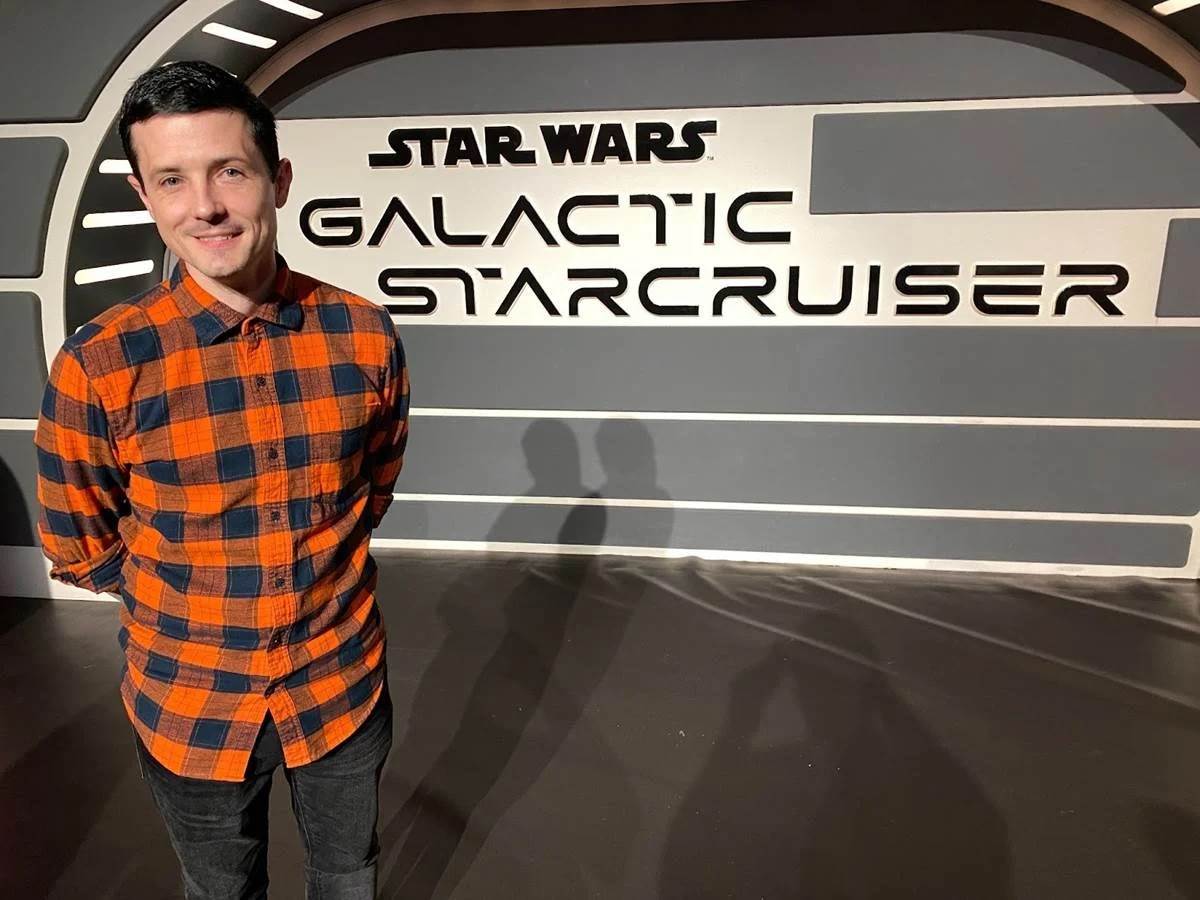
Lucasfilm's Matt Martin appears at the Star Wars: Galactic Starcruiser media event. Photo by Mike Celestino
LP: The final third of this novel is set on an ice moon called Madurs. Where did the idea for this location come from, and how did you go about fleshing out its environments and inhabitants?
Revis: When it comes to Star Wars planets, a lot of them become known for their type of climate. Hoth is the ice planet and Endor is the forest moon, and things like that. For me, I wanted to deal with [the climate of] Hoth, in part because of the coldness of it, but also because Han [had recently been] frozen in carbonite. So that coldness of being frozen and also the coldness of Hoth were things I wanted to play with, but I wanted to turn it into a really beautiful world that was different and stood on its own. That’s where the moon of Madurs came from, named for my two favorite science-fiction authors: Madeleine L'Engle and Ursula K. Le Guin. I had to sneak my little sci-fi nerdiness in there [laughs]. It’s also in the L’Enguin system, so I brought both their names in on that one. That’s where the world came from– this way to play on Hoth and carbonite freezing, but also bring in art and beauty and how this harsh world can be a beautiful thing. From there, I was able to make the characters fit. I don’t want to spoil who’s in there, but if you like some of the juvenilia stories that have come out, you might recognize a character from one of those. Then [I invented] a few characters of my own to flesh out the world.
LP: How did you arrive at the decision to have art be one of Madurs’s chief exports?
Revis: That just evolved organically, because I was trying to balance the harshness of an ice world with something beautiful. At first it became the architecture– they build these ice palaces as part of their city– and then I was like, ‘Well, characters who will make their habitations beautiful would also have a great value for art in general.’ And this whole storyline about art as a form of rebellion spun out from this idea of, ‘This harsh world became something they found beauty in, and that became something they found art in, and that became the basis of their rebellion.’
LP: Lastly, what do you hope that Han and Leia fans, not to mention Star Wars fans in general, will get out of The Princess and the Scoundrel?
Revis: I always think of Star Wars in terms of the word ‘hope.’ I know that Leia turned that word almost into a meme, but Star Wars to me has always been about hope. It’s hard to write about a love story that we know exactly what happens in the end. Thanks to the sequel trilogy, we know what’s going to happen, so ‘hope’ is not necessarily the right word that will exist for this [story]. Instead, I hope that Han and Leia fans– and Star Wars fans in general– take from this the idea of joy, and that there’s joy in the moment. There’s hope, of course, but there’s also times for joy and just being happy in the moment, and being in love in the moment, and relishing each moment that you have without worrying too much about what’s going to happen in the end. You can just exist in the moment of joy and relish it as it comes.
Star Wars: The Princess and the Scoundrel will be released on Tuesday, August 16 wherever books are sold, but is available for pre-order right now. The full audio version of this interview can be heard in this week’s episode of Laughing Place’s Star Wars podcast “Who’s the Bossk?”

